
Piracy in the 21st century (commonly known as modern piracy) has taken place in a number of waters around the world, including the Gulf of Guinea, Strait of Malacca, Sulu and Celebes Seas, Indian Ocean, and Falcon Lake.

Piracy in the 21st century (commonly known as modern piracy) has taken place in a number of waters around the world, including the Gulf of Guinea, Strait of Malacca, Sulu and Celebes Seas, Indian Ocean, and Falcon Lake.

Due to the crisis in Bolivarian Venezuela, issues of piracy returned to the Caribbean in the 2010s, with the increase of pirates being compared to piracy off the coast of Somalia due to the similar socioeconomic origins. [1] In 2016, former fishermen became pirates, appearing in the state of Sucre, with attacks happening daily and multiple killings occurring. [2] By 2018 as Venezuelans became more desperate, fears arose that Venezuelan pirates would spread throughout Caribbean waters. [1] Many could have turned to piracy due to larger ships from other countries entering a Low Income Country's (LIC) (for example Somalia) water for resources such as fish and most of the people living in LICs have jobs as fishermen. Eventually, the larger ships will leave 'permanently' because of the lack of fish and the fishermen won't have any income to gain.
Piracy on Falcon Lake involves crime at the border between the United States and Mexico on Falcon Lake. The lake is a 100-kilometre-long (60 mi) reservoir constructed in 1954 and is a known drug smuggling route. [3]
A turf war between rival drug cartels for control of the lake began in March 2010 and has led to a series of armed robberies and shooting incidents. All of the attacks were credited to the Los Zetas cartel and occurred primarily on the Mexican side of the reservoir but within sight of the Texas coast. The so-called pirates operate "fleets" of small boats designed to seize fishermen and smuggle drugs. [4] [5]
While the events have been referred to colloquially as piracy, all the waters of Falcon Lake are considered either US or Mexican territorial waters and therefore are not technically piracy under Article 101 of the UN Convention on the Law of the Sea. [6]
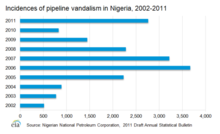
Piracy in the Gulf of Guinea affects a number of countries in West Africa as well as the wider international community. By 2011, it had become an issue of global concern. [7] [8] Pirates in the Gulf of Guinea are often part of heavily armed criminal enterprises, who employ violent methods to steal oil cargo. [9] In 2012, the International Maritime Bureau, Oceans Beyond Piracy and the Maritime Piracy Humanitarian Response Program reported that the number of vessels attacked by West African pirates had reached a world high, with 966 seafarers attacked during the year. [10]
Piracy in the Gulf of Guinea has evolved over the first decade of the century. For some time, smaller ships shuttling employees and materials belonging to the oil companies with any involvement in oil exploration had been at risk in Nigeria. Over time, pirates became more aggressive and better armed. [8] As of 2014, pirate attacks in West Africa mainly occur in territorial waters, terminals and harbours rather than in the high seas. This incident pattern has hindered intervention by international naval forces. Pirates in the region operate a well-funded criminal industry, which includes established supply networks. They are often part of heavily armed and sophisticated criminal enterprises, who increasingly use motherships to launch their attacks. The local pirates' overall aim is to steal oil cargo. As such, they do not attach much importance to holding crew members and non-oil cargo and vessels for ransom. Additionally, pirates in the Gulf of Guinea are especially noted for their violent modus operandi, which frequently involves the kidnapping, torture and shooting of crewmen. The increasingly violent methods used by these groups is believed to be part of a conscious "business model" adopted by them, in which violence and intimidation plays a major role. [9]
By 2010, 45 and by 2012 120 incidents were reported to the UN International Maritime Organization. [7] However, many events go unreported. Piracy acts interfere with the legitimate trading interests of the affected countries that include Benin, Togo, Côte d’Ivoire, Ghana, Nigeria, and the Democratic Republic of Congo. As an example, trade of Benin's major port, the Port of Cotonou, was reported in 2012 to have dropped by 70 percent. [8] The cost of piracy in the Gulf of Guinea due to stolen goods, security, and insurance has been estimated to be about $2 billion. [7] According to the Control Risks Group, pirate attacks in the Gulf of Guinea had by mid-November 2013 maintained a steady level of around 100 attempted hijackings in the year, a close third behind Southeast Asia. [11]
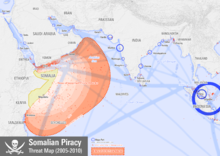
Piracy in the Indian Ocean has been a threat to international shipping since the beginning of the Somali Civil War in the early 1990s. [12] Since 2005, many international organizations have expressed concern over the rise in acts of piracy. [13] [14] Piracy impeded the delivery of shipments and increased shipping expenses, costing an estimated $6.6 to $6.9 billion a year in global trade according to Oceans Beyond Piracy (OBP). [15] According to the German Institute for Economic Research (DIW), a veritable industry of profiteers also arose around the piracy. Insurance companies significantly increased their profits from the pirate attacks as insurance companies hiked rate premiums in response. [16]
Combined Task Force 150, a multinational coalition task force, took on the role of fighting the piracy by establishing a Maritime Security Patrol Area (MSPA) within the Gulf of Aden and Guardafui Channel. [17] By September 2012, the heyday of piracy in the Indian Ocean was reportedly over. [18] According to the International Maritime Bureau, pirate attacks had by October 2012 dropped to a six-year low, with only one ship attacked in the third quarter compared to thirty-six during the same period in 2011. [19] By December 2013, the US Office of Naval Intelligence reported that only 9 vessels had been attacked during the year by the pirates, with zero successful hijackings. [20] Control Risks attributed this 90% decline in pirate activity from the corresponding period in 2012 to the adoption of best management practices by vessel owners and crews, armed private security on board ships, a significant naval presence, and the development of onshore security forces. [21]

Pirates in the Strait of Malacca near Indonesia are normally armed with guns, knives, or machetes. The pirates in this area also attack ships during the night. If vessels sound an alarm, the pirates usually leave without confronting the crew. [22] Pirates in the Singapore Straits attack at night, while ships are underway or anchored. [22]
According to the Control Risks Group, pirate attacks in the Strait of Malacca had by mid-November 2013 reached a world high, surpassing those in the Gulf of Guinea. [11]

The Sulu and Celebes Seas, a semi- enclosed sea area and porous region that covers an area of space around 1 million square kilometres, [23] have been subject to illegal maritime activities since the pre-colonial era [24] and continue to pose a maritime security threat to bordering nations up to this day. Recently, the abduction of crew members is the most common illicit activity, with most of the incidents being ascribed to the violent extremist group Abu Sayyaf. Since March 2016, the Information Sharing Centre (ISC) of the Regional Cooperation Agreement on Combating Piracy and Armed Robbery against Ships in Asia (ReCAAP) reports a total of 86 abuctions, [25] leading to the issue of a warning for ships transpassing the area. [26]
| Image | Flag (owner) | Name (class) | Crew (cargo) | Status | Date of attack | Coordinates |
|---|---|---|---|---|---|---|
| Date of release | Ransom demanded | |||||
| Dilruba (Fishing) | unknown (unknown) | Attacked | February 2001 | unknown | ||
| n/a | n/a | |||||
| Boarded off Patharghata. In a gun fight leaving one crew member wounded, the pirates stole supplies worth $139,373. | ||||||
| Lingfield (Tanker) | unknown (classified) | Attacked | March 7, 2001 | unknown | ||
| n/a | n/a | |||||
| Attacked near Bintan, Indonesia and boarded by eight pirates who, after tying up and blindfolding the ship's three senior officers, stole $11,000 from the ship's safe. | ||||||
| Jasper (Cargo) | unknown (unknown) | Attacked | March 9, 2001 | unknown | ||
| n/a | n/a | |||||
| Looted of $11,000 off the coast of Kosichang, Thailand by what was suspected to be members of a Thailand organized crime organization. | ||||||
| Inabukwa (Cargo) | unknown (unknown) | Attacked | March 15, 2001 | unknown | ||
| (2 weeks later) | n/a | |||||
| Boarded off the coast of Malaysia and, after marooning the crew on a nearby uninhabited island, the pirates escaped with the ship's cargo of tin ingots and pepper valued at $2,170,000. The ship was recovered by Filipino authorities two weeks later, following the arrest of the pirates. | ||||||
| Marine Universal (Cargo) | unknown (unknown) | Attacked | May 2001 | unknown | ||
| n/a | n/a | |||||
| Boarded by four pirates while at an anchorage in Lagos Harbor, Nigeria. Armed with long knives, they took one sailor hostage, and later threw him overboard. | ||||||
 | Maersk Alabama (Cargo) | 23 (17,000 metric tons) | Hostages rescued | 2009-04-08 | unknown | |
| 2009-04-12 | n/a | |||||
| Boarded by four pirates while en route to Mombasa, who attacked from another hijacked vessel. After a prolonged struggle with the crew, the pirates escaped the ship via lifeboat with the captain, Richard Phillips. Philips was rescued from the lifeboat three days later by US Navy SEALs, who killed three pirates. A fourth pirate, Abduwali Muse, was detained and convicted of hijacking and kidnapping in the United States. | ||||||
| MV Prantalay 11, 12, and 14 (Commercial fishing boat) | unknown (unknown) | Hijacked | 2010 | unknown | ||
| n/a | n/a | |||||
| The attack took place near the EEZ of India; however, the pirates took the boats and fisherman back to Somalia. The pirates held them for ransom until they received what they had asked for. | ||||||
| MSC Melody (Cruise ship) | unknown (unknown) | Attacked | 2009 | unknown | ||
| n/a | n/a | |||||
| About 800 kilometres (500 mi) off the coast of Somalia, pirates tried to attack an Italian cruise ship carrying nearly 1,500 people in 2009. An Israeli security team had been contracted to protect the cruise liner. Security personnel returned fire when the pirates started firing at the ship. The presence of a security team caused the pirates to turn around and abandon the attack. | ||||||
| SY Quest (Sail boat) | unknown (unknown) | Hijacked | 2011 | unknown | ||
| n/a | n/a | |||||
| In February 2011 Somali pirates killed four American hostages. The pirates hijacked a sail boat from the Arabian Sea and took the people aboard hostage, including a retired couple from California. When the US Navy got too close, the pirates panicked and shot the hostages. A navy spokesperson said they did not understand why the hostages would be killed, when the pirates' motive is to hold hostages for ransom.[ citation needed ] | ||||||
( | Galaxy Leader (Cargo) | unknown (unknown) | Hijacked | 2023 | unknown | |
| (ongoing) | n/a | |||||
| In November 2023 during the Israel–Hamas war, Yemeni Houthis hijacked a Japanese-operated, British-owned cargo ship in the Red Sea, by landing on top of the deck from a helicopter. [27] [28] The Houthis claimed the ship was Israeli, a claim that Israel denied. [28] | ||||||
( | Central Park (Tanker) | 22 (phosphoric acid) | Hijacked | 26 November 2023 | unknown | |
| 26 November 2023 | n/a | |||||
| In November 2023, amid the Israel–Hamas war, the Central Park, a tanker ship owned by Zodiac Maritime, was attacked in the Gulf of Aden by suspected Somali pirates. The crew of the USS Mason (DDG-87) came to the Central Park's assistance and captured five pirates. [29] | ||||||
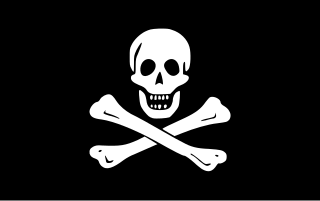
Piracy is an act of robbery or criminal violence by ship or boat-borne attackers upon another ship or a coastal area, typically with the goal of stealing cargo and other valuable goods. Those who conduct acts of piracy are called pirates, and vessels used for piracy are called pirate ships. The earliest documented instances of piracy were in the 14th century BC, when the Sea Peoples, a group of ocean raiders, attacked the ships of the Aegean and Mediterranean civilisations. Narrow channels which funnel shipping into predictable routes have long created opportunities for piracy, as well as for privateering and commerce raiding.

Piracy in the Strait of Malacca has long been a threat to ship owners and the mariners who ply the 900 km-long sea lane. In recent years, coordinated patrols by Indonesia, Malaysia, Thailand, and Singapore along with increased security on vessels have sparked a sharp downturn in piracy.

Piracy in the Gulf of Guinea affects a number of countries in West Africa as well as the wider international community. By 2011, it had become an issue of global concern. Pirates in the Gulf of Guinea are often part of heavily armed criminal enterprises, who employ violent methods to steal oil cargo. In 2012, the International Maritime Bureau, Oceans Beyond Piracy and the Maritime Piracy Humanitarian Response Program reported that the number of vessels attacks by West African pirates had reached a world high, with 966 seafarers attacked during the year. According to the Control Risks Group, pirate attacks in the Gulf of Guinea had by mid-November 2013 maintained a steady level of around 100 attempted hijackings in the year, a close second behind the Strait of Malacca in Southeast Asia. Piracy in the Gulf of Guinea continues to be a concern to significantly affect the shipping industry, surging again in the 2020s. Governments in the region generally highlight that the fight against piracy requires a broad understanding of maritime security throughout the Gulf of Guinea.
Piracy off the coast of Somalia occurs in the Gulf of Aden, Guardafui Channel, and Somali Sea, in Somali territorial waters and other surrounding places and has a long and troubled history with different perspectives from different communities. It was initially a threat to international fishing vessels during the early 2000s, only to rapidly escalate and expand to international shipping during the War in Somalia (2006–2009).
Piracy in Indonesia is not only notorious, but according to a survey conducted by the International Maritime Bureau, it was also the country sporting the highest rate of pirate attacks back in 2004, where it subsequently dropped to second place of the world's worst country of pirate attacks in 2008, finishing just behind Nigeria. However, Indonesia is still deemed the country with the world's most dangerous water due to its high piracy rate. With more than half of the world's piracy crimes surrounding the South-East Asia aquatic regions, the turmoil caused by piracy has made the Strait of Malacca a distinct pirate hotspot accounting for most of the attacks in Indonesia, making the ships that sail in this region risky ever since the Europeans arrived. The term 'Piracy in Indonesia' includes both cases of Indonesian pirates hijacking other cargo and tanks, as well as the high rate of practising piracy within the country itself. The Strait of Malacca is also one of the world's busiest shipping routes as it accounts for more than twenty-five percent of the world's barter goods that come mainly from China and Japan. Approximately 50,000 vessels worth of the world's trade employ the strait annually, including oil from the Persian Gulf and manufactured goods to the Middle East and Suez Canal. The success that stems from this trade portal makes the Strait an ideal location for pirate attacks.

Piracy on Falcon Lake refers to an increase in crime at the border between the United States and Mexico on Falcon Lake. The lake is a 60-mile (97 km) long reservoir of the Rio Grande that was constructed in 1954 and is a known drug smuggling route.
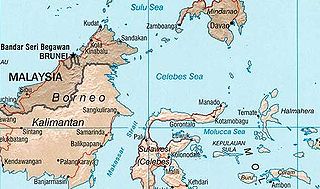
The Sulu and Celebes Seas, a semi-enclosed sea area and porous region that covers an area of space around 1 million square kilometres, have been subject to illegal maritime activities since the pre-colonial era and continue to pose a maritime security threat to bordering nations up to this day. While piracy has long been identified as an ubiquitous challenge, being historically interwoven with the region, recent incidents also include other types of maritime crimes such as kidnapping and the trafficking of humans, arms and drugs. Attacks mostly classify as 'armed robbery against ships' according to the United Nations Convention on the Law of the Sea as they occur in maritime zones that lie under the sovereignty of a coastal state. Incidents in the Sulu and Celebes Seas specifically involve the abduction of crew members. Since March 2016, the Information Sharing Centre (ISC) of the Regional Cooperation Agreement on Combating Piracy and Armed Robbery against Ships in Asia (ReCAAP) reports a total of 86 abductions, leading to the issue of a warning for ships transpassing the area.

Operation Ocean Shield was NATO's contribution to Operation Enduring Freedom – Horn of Africa (OEF-HOA), an anti-piracy initiative in the Indian Ocean, Guardafui Channel, Gulf of Aden and Arabian Sea. It follows the earlier Operation Allied Protector. Naval operations began on 17 August 2009 after being approved by the North Atlantic Council, the program was terminated on 15 December 2016 by NATO. Operation Ocean Shield focused on protecting the ships of Operation Allied Provider, which transported relief supplies as part of the World Food Programme's mission in the region. The initiative also helped strengthen the navies and coast guards of regional states to assist in countering pirate attacks. Additionally, China, Japan and South Korea sent warships to participate in these activities.
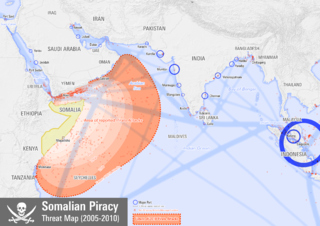
Piracy in Somalia has been a threat to international shipping since the beginning of the country's civil war in the early 1990s. Since 2005, many international organizations have expressed concern over the rise in acts of piracy. Piracy impeded the delivery of shipments and increased shipping expenses, costing an estimated $6.6 to $6.9 billion a year in global trade in 2011 according to Oceans Beyond Piracy (OBP).
Operation Dawn 8: Gulf of Aden was a naval operation carried out by the Royal Malaysian Navy against pirates in the Indian Ocean on 20 January 2011. In response to the hijacking of MV Bunga Laurel, the Malaysian Shipborne Protection Team deployed an attack helicopter and 14 members of the naval counter-terrorism group PASKAL in two rigid-hulled inflatable boats to retake the vessel and rescue the crew. After one night of trailing the tanker, the Malaysian forces successfully retook the ship by force on 20 January 2011, resulting in the wounding of three and the capture of four out of 18 pirates, and all 23 vessel crewmembers rescued.
Piracy has taken place in a maritime area bounded by Suez and the Strait of Hormuz, in the region around the Horn of Africa, and waters surrounding the Arabian Peninsula; in the region of the Indian Ocean from the Red Sea through the Arabian Sea to the Gulf of Oman.
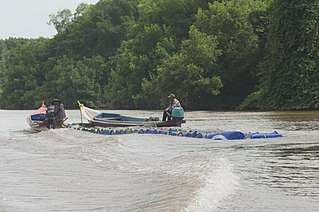
Piracy off the coast of Venezuela increased during the crisis in Venezuela. The situation has been compared to piracy off the coast of Somalia, which was also caused by economic collapse. As Venezuelans grow more desperate, fears of increasing incidents and range of piracy have been reported. Venezuelan pirates often smuggle weapons, drugs and sex trafficking victims. Authorities have also been involved in piracy near the coast of Venezuela.
As a practice of piracy, petro-piracy, also sometimes called oil piracy or petrol piracy, is defined as “illegal taking of oil after vessel hijacks, which are sometimes executed with the use of motorships” with huge potential financial rewards. Petro-piracy is mostly a practice that is connected to and originates from piracy in the Gulf of Guinea, but examples of petro-piracy outside of the Gulf of Guinea is not uncommon. At least since 2008, the Gulf of Guinea has been home to pirates practicing petro-piracy by targeting the region's extensive oil industry. Piracy in the Gulf of Guinea has risen in the last years to become the hot spot of piracy globally with 76 actual and attempted attacks, according to the International Maritime Bureau (IMB). Most of these attacks in the Gulf of Guinea take place in inland or territorial waters, but recently pirates have been proven to venture further out to sea, e.g. crew members were kidnapped from the tanker David B. 220 nautical miles outside of Benin. Pirates most often targets vessels carrying oil products and kidnappings of crew for ransom. IMB reports that countries in the Gulf of Guinea, Angola, Benin, Cameroon, Equatorial Guinea, Ghana, Guinea, Ivory Coast, Togo, Congo, and, especially, Nigeria, have experienced petro-piracy and kidnappings of crew as the most common trends of piracy attacks in the Gulf of Guinea.
Danish shipping's counter-piracy strategy is necessary as Denmark operates one of the world's five largest shipping nations in terms of operated fleet, controlling around 10% of global shipping. At any given time, there are approximately 70 Danish-controlled ships in the Indian Ocean and 30 ships in the Gulf of Guinea. This makes piracy in these areas is a significant concern for the Danish shipping industry and for the Danish state. In 2012, when Somali piracy was at its height, the piracy cost of Danish shipping was estimated to be between 130 and 260 million Euros.
Piracy kidnappings occur during piracy, when people are kidnapped by pirates or taken hostage. Article 1 of the United Nations International Convention against the Taking of Hostages defines a hostage-taker as "any person who seizes or detains and threatens to kill, to injure, or to continue to detain another person in order to compel a third party namely, a State, an international intergovernmental organization, a natural or Juridical person, or a group of people, to do or abstain from doing any act as an explicit or implicit condition tor the release of the hostage commits the offense of taking of hostages ("hostage-taking") within the meaning of this convention." Kidnappers often try to obtain the largest financial reward possible in exchange for hostages, but piracy kidnappings can also be politically motivated.
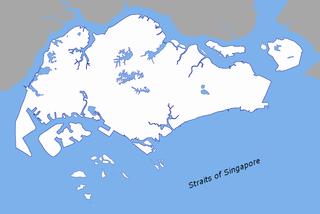
Frequent incidents of piracy and armed robbery in the Singapore Strait have led to the area being labelled as an area of concern by the Regional Cooperation Agreement on Combating Piracy and Armed Robbery against Ships in Asia (RECAAP). The Singapore Strait is located south of Singapore, south-east of Malaysia and north of the Indonesian Riau Islands. The Singapore Strait is roughly 113 km long with an average width of 19 km. The Singapore Strait was the location of 65% of all incidents of piracy and armed robbery which occurred in Asia in 2022, marking a seven year high in recorded incidents of piracy and armed robbery in the area.
2023 in piracy was marked by 120 events of maritime piracy against ships, according to the annual Piracy and Armed Robbery Report of the ICC International Maritime Bureau (IMB). 105 vessels were boarded, nine additional attacks attempted, two fired upon, and four vessels hijacked.
2022 in piracy resulted in 115 reports of maritime piracy and armed robbery against ships to the International Maritime Bureau. 288 acts of global piracy and robbery were recorded by the MICA Centre. Piracy had substantially increased in the Gulf of Guinea; the year began with five incidents each month, through March, in the Gulf, where acts of piracy had become heightened during 2015 through 2020, while, overall, piracy incidents declined globally.
2024 in piracy included 33 reports of maritime piracy and armed robbery against ships to the International Maritime Bureau during the first quarter of the year. Incidents included 24 vessels boarded, six of which experienced attempted attacks; two hijacked; and one fired upon. Crew continued to suffer violence, with 35 crew taken hostage, nine kidnapped, and one threatened during three first three months of the year.
{{cite journal}}: CS1 maint: multiple names: authors list (link){{cite web}}: CS1 maint: numeric names: authors list (link){{cite journal}}: Cite journal requires |journal= (help)